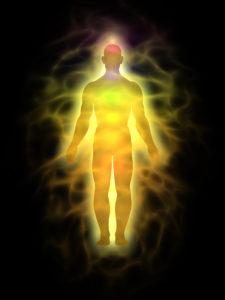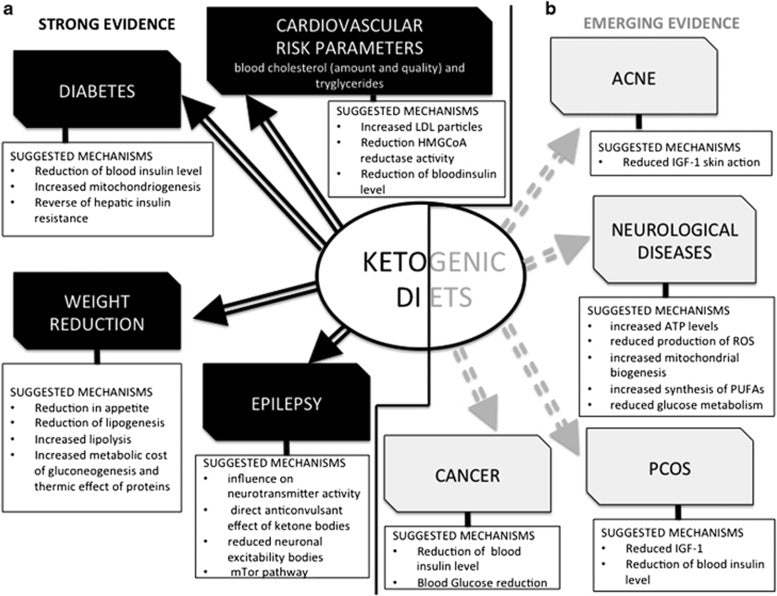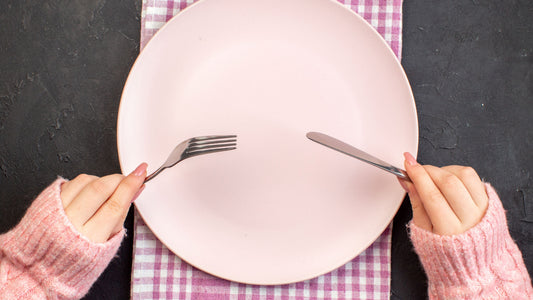Along with living an alkaline lifestyle, one of the key principles of my Magic Menopause hormone reset program is eating a ketogenic-friendly diet. This diet puts your body in a fat-burning state called ketosis. My program's Keto-Green® Diet includes ketogenic methodologies.
It also incorporates the “reality of everyday life” into one’s diet. I’ll explain what I mean about this in just a moment.
First, for those of you who aren’t familiar with ketosis, let me give you a short overview.
A ketogenic diet is a diet which is low in (unhealthy) carbs and high in (healthy) fats and (healthy) protein.
So How Does a Ketogenic Diet Work So Well At Supporting Fat Loss And Other Health Benefits?

Ketosis is all about what your body uses as fuel.It’s really a simple concept at the surface, a bit more complex when you look at the actual physiology.
Eating high carbs = high blood glucose (sugar), high insulin, stored fat… and low fat burning, low metabolism and belly fat. Your body’s fuel source is glucose, not fat. Let me explain.
When you eat carbs your body’s blood glucose increases and spikes your blood sugar. Your body releases more insulin as a reaction to elevated blood glucose levels. Insulin is produced to get the glucose from your body and into the cells. There it gets converted to energy. Your body burns the glucose to make its energy and then insulin tells the cells to store their energy as carbs or fat (the unhealthy and dreaded belly fat).
When you eat a lot of carbs on an ongoing basis (like many Americans do, eating a lot of processed foods, sugar, alcohol, soda and such!) insulin is continually stimulated. This can lead to a health condition called insulin resistance, where the cells start to resist the insulin.
When this happens, your blood sugar just continues to rise and you can become diabetic. Along with diabetes, many other health issues including heart disease and even dementia have been associated with insulin resistance.
We Were Just Not Designed To Consume Cereals For Breakfast, Sandwiches For Lunch And Bread With Dinner
But what happens if you don’t eat carbs? If you don’t eat carbs, you eliminate the production of glucose – and the production of insulin - so your body looks around for something other than glucose to burn for energy…and what does it burn? Stored fat!
The ketogenic diet works by keeping the body’s carbohydrate stores almost empty. Your body starts burning its own body fat for energy, helping you lose weight quickly. It will also burn fat that you’re consuming through your diet, assuming you are eating healthy fats (not Trans fats, etc.).
How Do We Know The Body Is Burning Fat?
When your body doesn’t have the carbs it goes into a metabolic state called ketosis. When your body is in ketosis it is getting its energy from ketone bodies in your blood. And ketones can be measured! (and we do measure them as part of my Magic Menopause program).
Studies have shown that with about 3-4 days without carbohydrate consumption the body starts tapping its fat storage. This causes an overproduction of something called acetyl coenzyme A (Acetyl CoA). The overproduction of Acetyl CoA is what causes the higher-than-normal levels of ketone bodies (acetoacetic acid, β-hydroxybutyric acid and acetone) in the liver.
When you are eating carbs, the production of acetoacetic acid is very slight and what is produced is rapidly metabolized by tissue. When your body is in ketosis, the acetoacetic acid accumulates above normal levels and some is converted to ketonemia and ketonuria ketone bodies. These are what are measured in urine and blood testing. And these are what the body uses as a source of energy.
Along with ketones, there may be other reasons for improved weight loss during ketosis. There is a possible appetite-suppressant action in ketosis, due to level fluctuations in hormones involved in appetite, such as ghrelin and leptin.
Research Supports Additional Benefits Of Ketosis
There have been many studies which have scientifically shown that a ketosis state not only supports weight loss, but that is also reduces epileptic seizures, reduces overall inflammation and blood sugar issues (diabetes, insulin resistance), may help fight cancer and may even be effective at treating diseases such as Alzheimer’s disease and Parkinson’s.
Many in the medical community already view a ketogenic diet as an initial phase of many patient treatments, such as Dr. Mark Hyman using it as an initial step with some patients having mental disease (1). In fact the ketogenic diet was originally developed to address epileptic patients.
And even though this graphic is now several years old, I think it is good at depicting what we knew even then. And since 2013 the research continues to pile up as to how ketosis may benefit neurological diseases, mental health issues and even cancer. Even pre-2013 there were published studies that showed compelling evidence that at least in selected conditions there were significant clinical improvements observed in Alzheimer’s patients fed a ketogenic diet.

(Courtesy: European Journal of Clinical Nutrition (2013) 67, 789–796; doi:10.1038/ejcn.2013.116; published online 26 June 2013)
What Are The Requirements Of A Ketogenic Diet…And What Does Lifestyle Have To Do With It?
In my program participants initially focus on getting their body alkaline. As mentioned in my earlier article, that is with diet and nutrition as well as many different lifestyle considerations.
Once in an alkaline state, they factor in achieving ketosis. My program really strives for staying Keto-Alkaline, which is a very new concept, and more difficult than you would expect given our modern lifestyle.
My Keto-Green Diet plan focuses on attempting to achieve ketosis by a diet consisting of:

- 20% healthy protein (so…grass fed beef, organic eggs, etc.)
-
56-70% healthy fats
- Healthy saturated fats such as coconut oil, grass-fed butter and ghee
- Healthy omega-9 fatty acids found in olive oil, sprouted nuts and seeds, avocados, almonds
- Omega-3 fatty acids found in salmon, flax seeds and chia seeds
- 5-8% healthy carbs (so a diet very low in unhealthy carbs!!)
Key Notes Related To This “Optimal Nutrition Plate” Are:
- Fats mean healthy fats! So Trans fats and sugar are not healthy fats. And healthy, clean protein from grass fed, free range, wild caught sources. And finally, let’s talk about carbs.
- We say only 5-8% carbs…but let's make most of this good carbs! Green veggies are good, slow-burning carbs, and you want to keep eating those to stay alkaline and gain their wonderful nutrients, anti-oxidants and fiber benefits. In addition, they are low-glycemic and don’t cause blood sugar spikes or insulin resistance. Limit unhealthy carbs. Avoid gluten-containing whole grains, processed foods and dried fruits. When you do eat an unhealthy carb, try and eat it with some fiber, healthy protein or healthy fat to help reduce the carb’s sugar load.
- And this brings me to my earlier comment about needing to incorporate the realities of life into a ketogenic diet. I love my red wine…and am not going to say I can’t have that when I want to enjoy a glass (or two). Vices are part of most of our lives…Everyone has a life, and it is our only one…so yes, be healthy and stick to a keto-Green diet overall…but also recognize you will bounce in and out of ketosis due to life. You’ll eat something at a restaurant, you’ll give yourself a treat… it is best to just go with the flow, and actually…staying in ketosis strictly over too many months is just what I call “keto-crazy”… Keto-crazy is also how going on a ketogenic diet made me feel before I added the “getting alkaline” essential component at the same time... and urine pH and ketone testing to make sure I was keto-alkaline. That makes a huge difference.
Intermittent Fasting Is Also Part Of My Program For Getting Into Ketosis
I try and have participants go 13.5 to 15 hours between dinner and breakfast. Again, this creates a need for the body to find energy reserves beyond stored glucose. The body can only store reserves for about 24 hours. Intermittent fasting will allow you to drop your storage levels way down. Your body will then burn fat instead.
Research has shown reduced risk of breast cancer with longer fasting intervals above 12.5 hours.
There is so much more to it, but I’ll stop here for now. You can read more detailed info on intermittent fasting here.
The final point? You need to measure your ketones as only with measurement do you know where you are in terms of being in ketosis.
I developed Keto-pH® Uric Acid Test Strips (for measuring pH, ketones and Uric Acid) in support of my Magic Menopause program. Using them allows participants to easily measure where they are with both their alkalinity and ketone levels. It is the only way to really know. Yes, there are limitations to urine testing and I will address those in another blog.
Read About The Importance Of Combining Alkalinity With Keto
In future blogs I will be talking about how I combined an alkaline lifestyle and diet with keto principles, and why that is so important; and I will also provide some great "hacks" on how to be successful on a Keto-Green Diet.
Keep reading for much more on this important topic!
References:
1: https://www.youtube.com/watch?v=R1DuxIBQNnI
Henderson ST, Vogel JL, Barr LJ, Garvin F, Jones JJ, Costantini LC. Study of the ketogenic agent AC-1202 in mild to moderate Alzheimer’s disease: A randomized, double-blind, placebo-controlled, multicenter trial. Nutr Metab (Lond) 2009; 6: 31.
Dashti HM, Al-Zaid NS, Mathew TC, Al-Mousawi M, Talib H, Asfar SK et al. Long term effects of ketogenic diet in obese subjects with high cholesterol level. Mol Cell Biochem 2006; 286: 1–9.
Yancy WSJr, Foy M, Chalecki AM, Vernon MC, Westman EC. A low-carbohydrate, ketogenic diet to treat type 2 diabetes. Nutr Metab (Lond)2005; 2: 34.
http://www.nature.com/ejcn/journal/v67/n8/full/ejcn2013116a.html
Marinac CR, Nelson SH, Breen CI, et al. Prolonged Nightly Fasting and Breast Cancer Prognosis. JAMA Oncol.2016;2(8):1049-1055. doi:10.1001/jamaoncol.2016.0164.
http://oncology.jamanetwork.com/article.aspx?articleid=2506710



